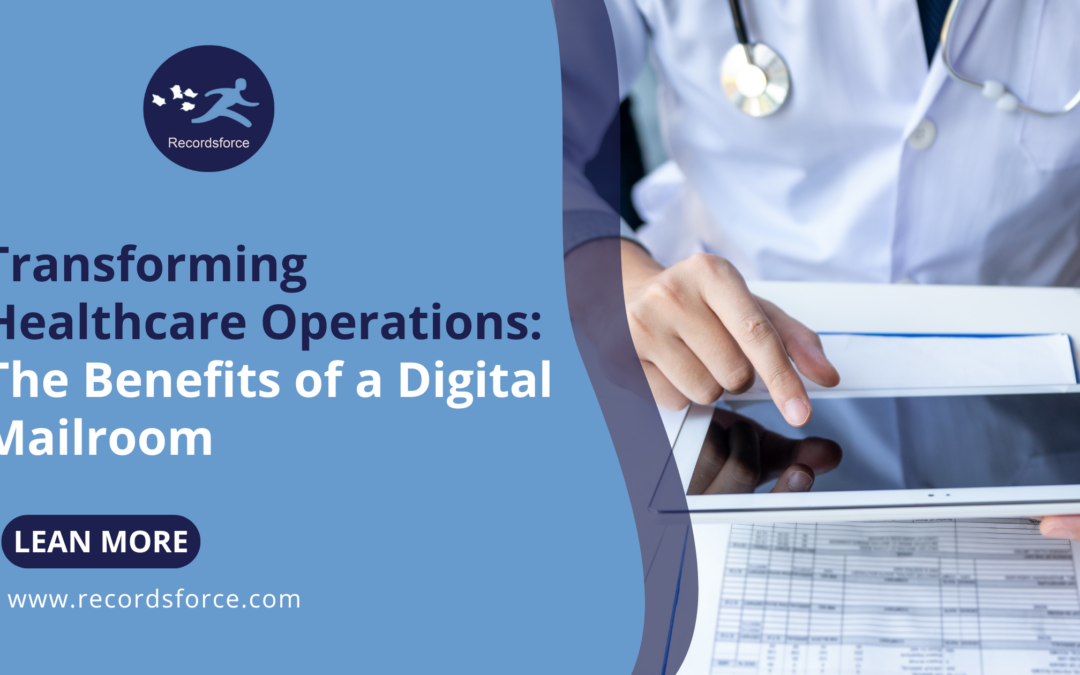A digital mailroom can transform the operations of healthcare practices by enhancing efficiency, accuracy, and security in handling essential documents. In an industry where speed and precision are paramount, digital mailrooms streamline incoming and outgoing communication, minimizing delays and improving patient care. Here’s how a digital mailroom can bring substantial benefits to healthcare practices:
1. Automated Document Processing
Traditionally, mailrooms process patient records, insurance claims, prescriptions, and billing statements manually. With a digital mailroom, these processes are digitized and automated, reducing manual handling and human error. Intelligent document capture and workflow technology categorizes, and routes documents automatically, ensuring critical information reaches the right department or person promptly. This not only speeds up response times but also allows healthcare providers to focus on core responsibilities, improving overall service quality.
2. Enhanced Data Security and Compliance
Healthcare practices handle sensitive data that requires compliance with regulations such as HIPAA. Digital mailrooms provide enhanced security by digitizing and securely storing all incoming documents, protecting them from unauthorized access, damage, or loss. Advanced encryption and access controls ensure that only authorized personnel can view sensitive patient information, significantly lowering the risk of data breaches. Additionally, audit trails help maintain compliance by documenting all interactions with patient data, providing a clear record if compliance checks are needed.
3. Improved Patient Experience with Faster Turnaround
A digital mailroom minimizes delays in document processing, allowing healthcare providers to respond more swiftly to patient needs. When medical records, insurance approvals, and other essential documents are digitized and available on demand, healthcare providers can expedite appointment scheduling, treatment decisions, and billing. This efficiency improves patient satisfaction, as they experience shorter wait times for services and more accurate, timely communication.
4. Facilitated Interdepartmental Communication
In healthcare, clear communication between departments like billing, records, and patient services is essential. A digital mailroom centralizes and digitizes all mail, creating an accessible repository that authorized personnel can access in real time. This enables smoother, more efficient information flow and ensures that every department has the latest updates without the delays or miscommunications common in physical mail handling.
5. Reduced Operational Costs
By automating the sorting, scanning, and distribution of mail, healthcare practices can significantly reduce costs related to physical mailroom maintenance and labor. The reduced reliance on paper and manual handling also results in lower paper, ink, and storage costs. Over time, these savings contribute to a leaner operation that can allocate resources more effectively toward patient care and other priorities.
6. Supports Remote Access and Flexibility
As healthcare practices embrace digital transformation, remote access to documents is increasingly valuable. With a digital mailroom, employees can securely access digital files from any location, enabling hybrid work models and flexible working arrangements. This capability not only boosts employee productivity but also ensures that patient care continues without interruption, regardless of where staff members are located.
7. Improved Disaster Recovery and Document Preservation
Physical documents are susceptible to damage from fires, floods, or other disasters. A digital mailroom ensures critical documents are digitized and securely stored, providing a reliable backup in case of emergencies. With documents in the cloud or secure digital storage, healthcare practices have peace of mind knowing that they can quickly recover and restore essential information, maintaining continuity in patient care and business operations.
Conclusion
Implementing a digital mailroom provides healthcare practices with a secure, efficient, and compliant way to handle critical documents. It accelerates operations, enhances the patient experience, and allows staff to focus more on patient care instead of administrative tasks. For healthcare practices aiming to deliver top-quality care in an increasingly digital world, a digital mailroom is a crucial step toward a smarter, more connected future.

